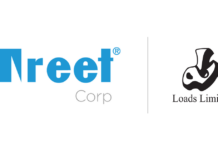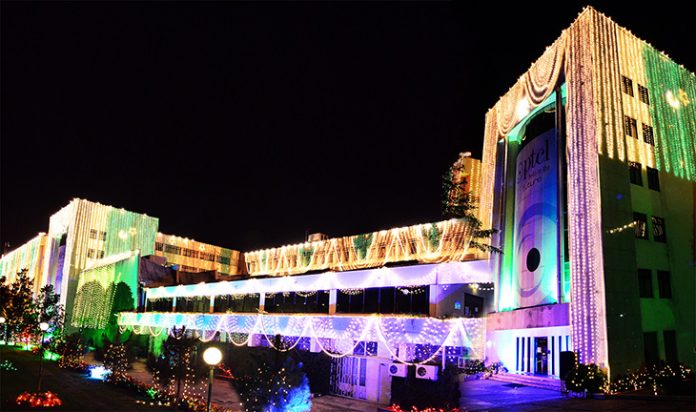When he took to the podium at the Management Association of Pakistan’s 18th Convention held in Karachi’s Mövenpick Hotel recently, Dr. Daniel Ritz, President and Chief Executive Officer of Pakistan Telecommunication Company Limited was clear about the mistakes PTCL made and the direction his company had to take. Drawing parallels between PTCL and Pakistan Cricket Team, the CEO said, “Both are number one, but not meeting the country’s expectations.” There have been ‘good days and bad days’ as both the country’s cricket team and PTCL were ‘inconsistent’ in their performance, Dr. Ritz said as he swiped through slides, visuals of fans reacting to Pakistan’s wins and losses in international cricket contests.
Since his presentation, Pakistan’s cricket team has come back in the game, showing a great deal of consistency in its performance. However, PTCL may take longer to do the same.
“Let me be very clear, it [restructuring PTCL] is a long journey. There are no easy fixes, no shortcuts to revamping such a large organization,” Dr. Ritz told a packed audience in what was his first public talk on the topic since taking office in March, 2016 – he was referring to the company’s gigantic but decaying infrastructure, its large employee base, mostly untrained, and its ‘inconsistency’ in providing quality services resulting in a plethora of customer complaints.
Faulty equipment and poor customer service have been some of the main problems PTCL’s customers faced over the years. During three-year period ending June 30, 2016, Pakistan Telecommunication Authority – the telecom sector’s regulatory body – received a total of 1,15,278 complaints of which 44,115, or 38%, were against PTCL alone.
Until a few years ago, calling a PTCL lineman to fix faulty telephone equipment or poor Internet connection required quite an effort, little wonder unsatisfied clients remain one of the priorities for the company’s new chief: “Customer service is an attitude, not a department. Everyone in the organization needs to learn that.”
With a renewed focus on customer experience, things have started to change at PTCL. The customer relations officers are more courteous and address complaints rather swiftly — and that’s one of the many changes the company is likely to witness under Dr. Ritz, the man tasked with restructuring this mammoth organization by its UAE-based parent, Etisalat.

“We have been replacing old infrastructure with state-of-the-art equipment,” the 50-year-old Swiss national said pointing to a slide displaying images of PTCL’s distribution equipment (cabinets) and the old government structures, which are being replaced by smartshops. Acknowledging their customers were not happy, he said changing an organization this big takes a lot of time and energy.
PTCL has more than 23,000 employees, over 400 telephone exchanges, 700,000 distribution points, and an optical fiber network of 38,000 kilometers, spread over the length and breadth of the country.
“Checking and revamping them [distribution points] will take a lot of time, but we want to be clear about what we aim to provide our customers,” the CEO said in an obvious reference to the quality of service and customer experience.
http://profit.com.pk/2016/11/14/profit-e-magazine-issue-01/
Dr. Ritz’s presentation was one of the most relevant speeches in the event’s context: an annual gathering of business leaders, MAP Convention, in its latest episode, focused on critical business and economic forces, trends, disruptive technologies and organizational and personal level changes that could reshape Pakistan’s commercial environment over the next two decades.
If one looks at the country’s telecom sector, the disruptive forces, which business leaders warned of in the MAP conference, have not only emerged but also brought about a major change in the broadband market. Existing fixed-line and other wireless technologies were no match for mobile broadband, which went through explosive growth since the April-2014 auction of 3G and 4G licenses, PTA said in a report.

The Internet subscriptions jumped from 3.8 million as of June 30, 2014 to a staggering 37 million at the end of September, the latest for which data is publicly available. Almost all of this growth can be attributed to the five cellular mobile operators (CMOs) that have added more than a million new subscriptions per month to the country’s broadband base since the launch of first 3G service.
On the other hand, PTCL suffered a great deal. Once a near monopoly in the country’s broadband market, the fixed-line Internet giant now accounts for less than a tenth of this rapidly growing segment – the company’s customer base reduced to a mere 7.6% of the Pakistan’s total Internet users at end of August, 2016 compared to a whopping 80% it had two years ago.
With the growing adoption of mobile broadband technology, PTCL lost over half a million subscribers to the competition.
As of August 2016, PTCL’s Evolution Data Optimized (EvDO) subscribers fell by 5% year-over-year while those of Digital Subscriber Line (DSL) remained almost flat, Topline Securities said in a report. “Fixed Line and Wireless Local Loop (WLL) segments have also been kept in check and we believe this is due to the proliferation of Mobile Broadband,” it said.
The stagnancy in PTCL’s legacy business was even reflected in the latest (July-Sept.) quarter. Though it turned back to profit, the company’s core business segments remained flat, say analysts.
PTCL Financial Highlights
PTCL could partially blame the latest technology for the loss of its subscribers, but experts say the company always had presence in that segment through its cellular arm, Ufone, which faced stiff competition from the other mobile operators.

Ufone was in the market even before Telenor and Zong, but these companies left it behind in the race of 3G, says Parvez Iftikhar of Islamabad-based information and communications technology think tank, ICT Forum Pakistan. They bought only 5 Megahertz of 3G spectrum and didn’t even bid for 10 MHz, which was not a smart bet, he said.
Despite a good start in the 3G market, Ufone was soon lagging behind other operators — the company’s 3G user base remained almost flat in the six-month period ending Sept. 30, 2016. It reported losses in most of 2015 and early 2016, analysts say.
“PTCL lacked a long-term strategy and rather focused on short-term profits,” ICT expert Parvez Iftikhar.
Explaining, he said their leadership mainly focused on the last mile customers while ignoring backhaul (infrastructure) where they had a huge advantage.
PTCL is the largest operator based on its revenues as of fiscal year 2016 and provides core infrastructure services to the Wireless Local Loop operators, Internet service providers, call centers, payphone services, Long Distance International (LDI) operators, and cellular operators and connects most, if not all, of them with Internet globally through its four international gateways (submarine cables). In other words, it is the carrier of carriers.
“They [PTCL] should have laid much more fiber optic in both metros and villages, which they didn’t,” said Iftikhar who provides consultancy services to telecom operators in different countries of Asia and Africa. Had the company expanded its network, even CMOs would have used its infrastructure as opposed to setting up their own towers, he said.
“PTCL could not become the carrier of carriers it was meant to be,” Iftikhar said adding the company failed to capitalize on its strong market position.
“Our target is to give 20 Megabits per second of Internet speed to our customers. This is the direction we want.”
The Pakistani subsidiary of Etisalat was in a very strong position until a few years ago. Just like its telephony service, it had an early mover’s advantage in the broadband segment, especially because of the delay in 3G auction. It fully capitalized on the opportunity through aggressive marketing and promotional campaigns for its DSL and EvDo customers, which more than doubled to 3.2 million between FY2012 and FY2014.

On the other hand, favorable policies of Government of Pakistan, which owns more than 60% of PTCL’s shares, helped the company increase its revenues and profit margins significantly.
A WLL license holder, PTCL continued to use its Evo service with full mobility that is its Karachi-based subscribers were using their devices in other parts of the country. This, according to Internet Service Providers Association of Pakistan, was a violation of PTA’s determination, dated July 13, 2005, which directed all WLL operators to implement ‘Single Cell Limited Mobility’ for both voice and data services. All this came at the expense of small internet service providers while the regulator looked the other way.
PTCL maintained that the PTA determination was related only to ‘voice’ service of WLL operators, and not data. However, a former PTA chief had confirmed that the limited mobility condition on WLL license applied to both voice and data.
Another boost to the PTCL’s revenue came from a PTA directive in October 2012, which led to the formation of International Clearing House (ICH) – a centralized telecom gateway meant for terminating all international calls landing in Pakistan.

The controversial cartel killed competition and allowed a consortium of 14 LDI operators – led by PTCL – to share revenues based on each operator’s market share. Since PTCL had the largest share in the market at that time, it was able to increase its top line by a significant margin.
PTCL Share Price Movement
On average, the company booked a net profit of more than Rs 100 crores every month during eighteen-month period ending June 30, 2014, becoming one of investors’ favorite stocks in 2013, the year its share price appreciated by 68%.
However, the impact of the aforesaid policies did not last long. In June 2014, PTA announced to discontinue ICH. On the other hand, CMOs also started rolling out their 3G and 4G services, breaking PTCL’s dominance in the broadband segment. As a result, investors offloaded their shares, reversing all the gains the stock had witnessed previously.
PTCL’s share price plunged by 45% and earnings shrank by 88% since 2014, Sherman Securities said in a report, dated June 16, 2016. “The company which holds $2.8 billion worth of assets is now trading at a market capitalization of only $722 million,” it said.
Explaining, the report said consistent decline in earnings of Ufone and discontinuation of ICH are the major reasons behind its dismal performance.
“ICH easily wiped off approximately Rs 500 crores from PTCL’s net profits,” says Zeeshan Afzal, who is Director Research at Insight Securities. Moreover, competition from Zong – Ufone’s chief rival — and high costs of 3G license as well as a voluntary separation scheme (VSS) ate up some of their gains, he said.
However, the analyst says PTCL is still in the game. “It has the largest infrastructure in the market and still gets good cash flows,” he said.
In a turnaround result, the company reported a net profit of Rs 87.6 crores for the quarter ending Sept. 30, 2016, compared to a loss of Rs 37.1 crores of the corresponding period last year.
The fixed-line internet giant still accounts for more than a quarter of the telecom sector’s total revenue based on PTA’s data for FY2016. It has a much higher data revenue per user compared to CMOs, which still generate a bulk of their revenue from voice services.

If the company is to sustain its leadership position and regain its dominance in the broadband market, Dr. Ritz will have to come up with a long-term strategy, say experts — Mobilink is set to surpass PTCL’s revenue as a result of its merger with Warid Telecom while Telenor Pakistan is closely following behind.
The CEO didn’t share exact details regarding how he plans to restructure the company, but assured the attendees of MAP conference that he is busy fixing this mammoth organization.
Dr. Ritz – who formerly worked with renowned organizations, such as Boston Consulting Group where he was Director and Business Partner – spends much of his time in the field to understand challenges on ground, ensures customer service representatives are trained to provide a better service, and frequently uses Facebook at Work, a feature he introduced for instant and better collaboration among all employees.

“Spending four months in office helped me understand the challenges,” PTCL’s new chief said adding, “Our target is to give 20 Megabits per second of Internet speed to our customers. This is the direction we want.”

There was no question-answer session to follow Dr. Ritz’s presentation nor did he entertain Profit’s request for an interview at the venue, but market talk certainly provides a hint towards his long-term plan for the company.
According to our sources, Etisalat has sent Dr. Ritz to consolidate its Pakistani businesses into a bigger telecom company, whereby Ufone and PTCL will be merged to form one company and provide broadband, telephony, LDI and fiber to the home services. “I plan to position PTCL as an integrated telecom provider of Pakistan,” Dr. Ritz had said at the time of his appointment.
Barely six months into his appointment, PTCL signed a Fiber Optic Leasing Agreement with Zong for deploying 789 Kilometer of fiber for the latter. “This agreement will serve as a major milestone towards achieving PTCL’s vision of being the carrier of carriers,” the company said in a press release in August.
PTCL’s chief didn’t talk about whether the company will lay off any employees as part of its restructuring. Market experts, however, expect a lot of cost cutting measures including some layoffs through VSS — once a 60,000-strong company, PTCL has already reduced to its workforce to about 23,000 as a result of its privatization.
Though optimistic about his plans to put the company back on growth and consolidate its leadership position, the Swiss national seems to be adamant on one thing: it will take a while to achieve the target.
“We are changing, we’ll change but there are no easy fixes or short cuts to this. And we have just begun,” Dr. Ritz said wrapping up his presentation on the iconic picture of Pakistan Cricket team posing with the 2009 ICC World Twenty20 trophy, the country’s only world title in the shorter form of cricket.
























